Abstract
Bacteriological techniques have traditionally been used to detect faecal pollution of drinking water supplies. Recently, methods have been developed to distinguish between human and animal faecal pollution in temperate climates. The present study assessed the applicability and practicality of these methods in tropical countries. Fieldwork in Nigeria and Zimbabwe has shown that animal faecal pollution can reliably be identified by the detection and enumeration of Rhodococcus coprophilus using modified M3 agar, whereas human faecal contamination can be identified by the detection of sorbitol-fermenting bifidobacteria. Each of these organisms was detected only in the faeces of the type (human or animal) that it was meant to indicate. Although Streptococcus bovis has been used in the past in mainly temperate countries to distinguish animal from human faecal contamination, the present study has shown that this organism is not a reliable indicator of animal pollution in the tropics because it was excreted by a proportion of the human population in both Nigeria and Zimbabwe. Water sources known to be contaminated by human or animal excreta were examined for these indicator organisms. The results correlated with the results obtained from examining human and animal faecal specimens for these organisms. The role of these bacteriological methods in water pollution control programmes is discussed.
Full text
PDF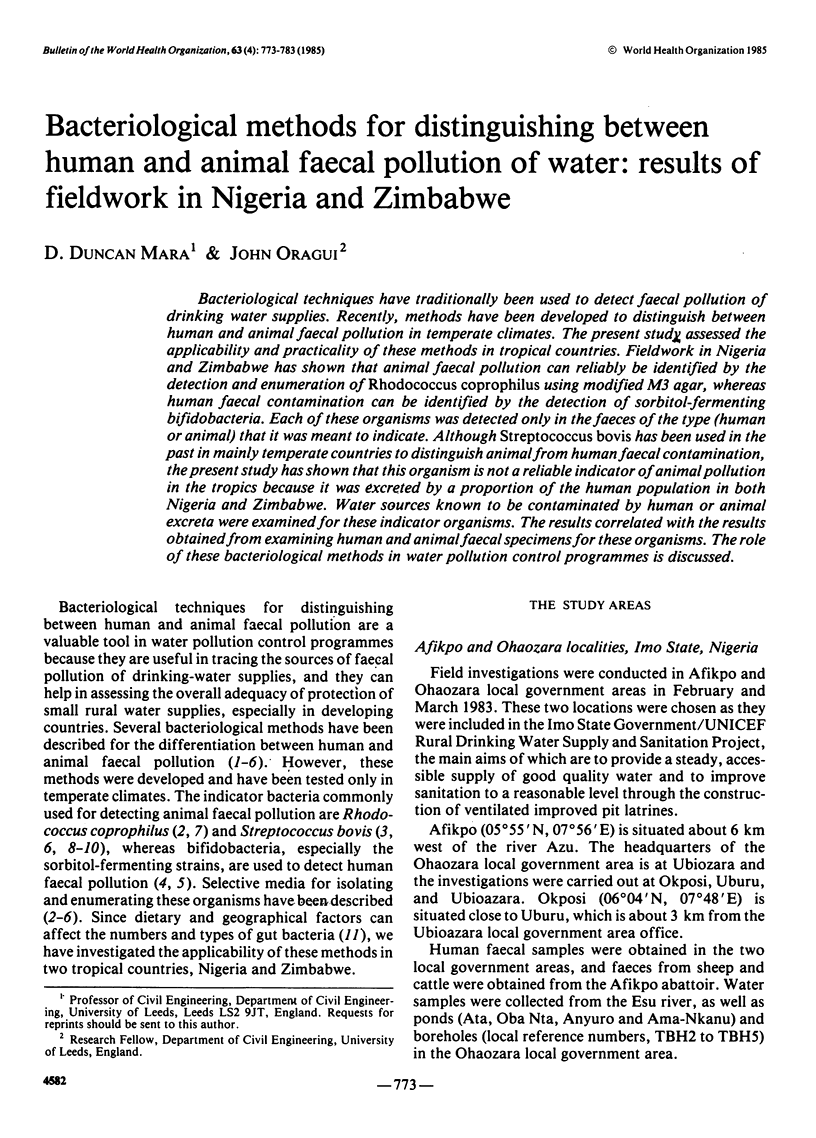
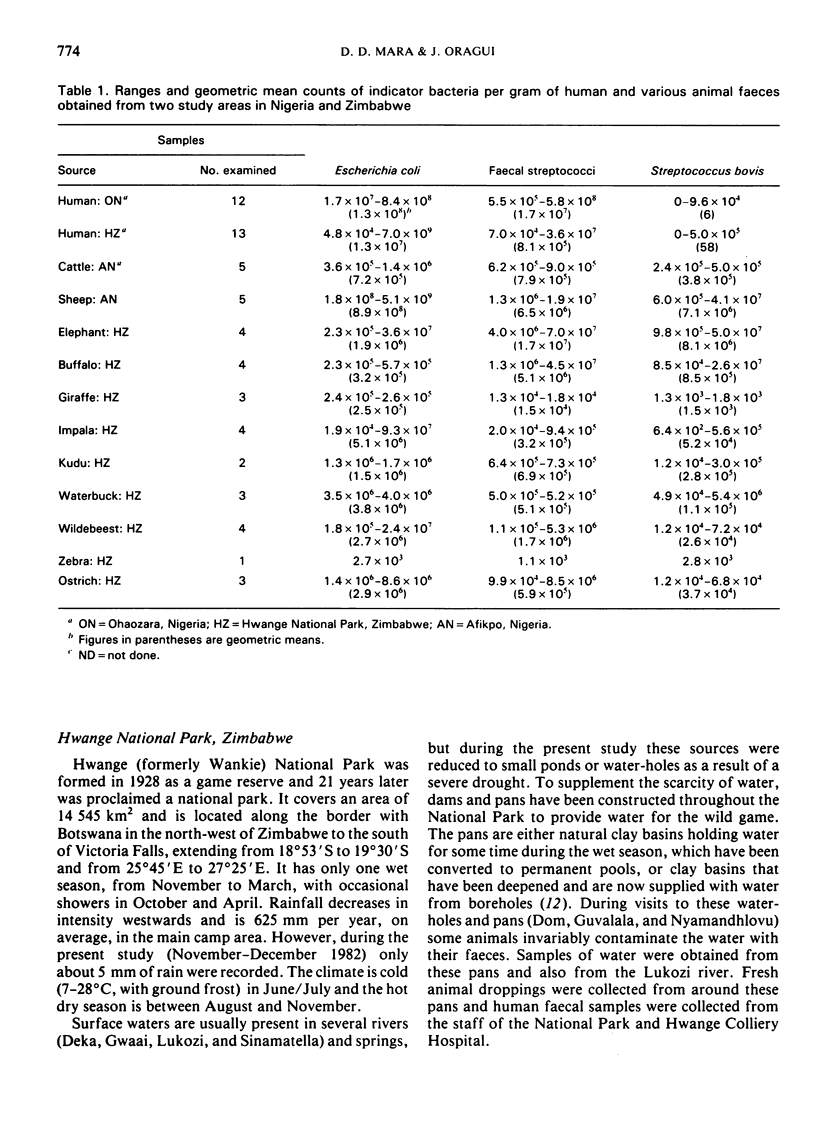
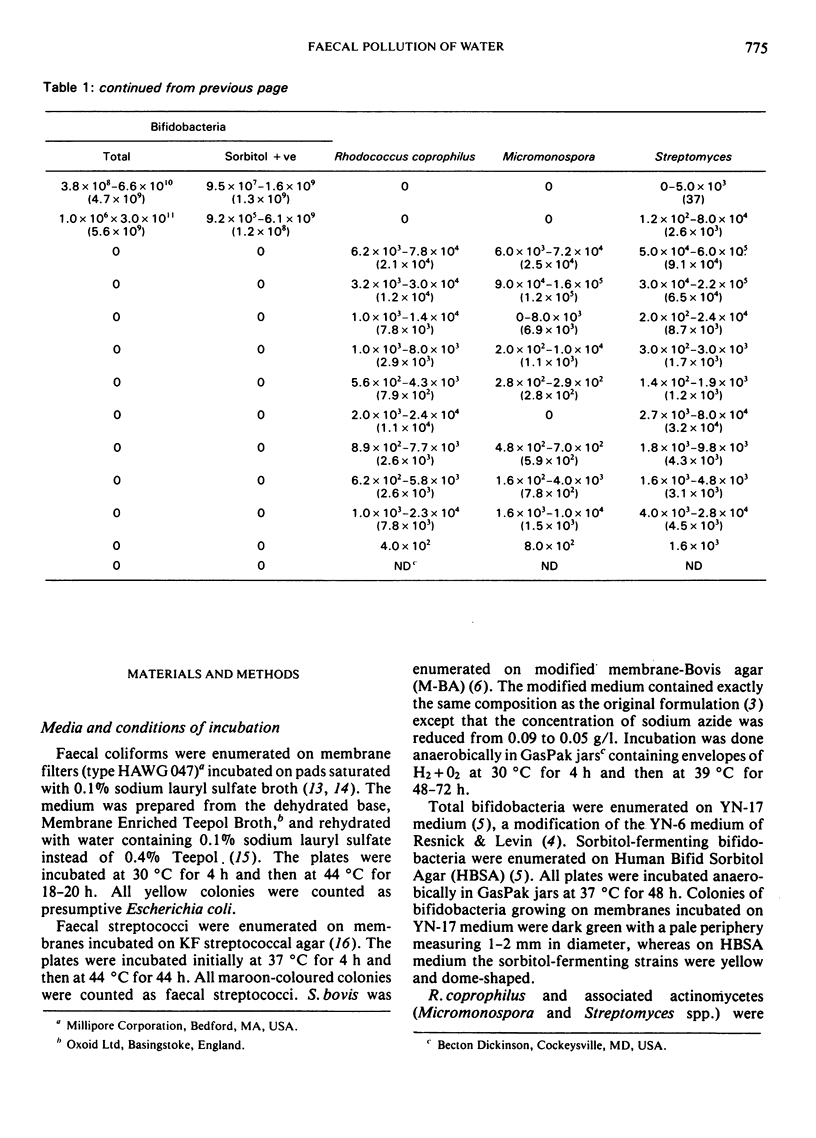
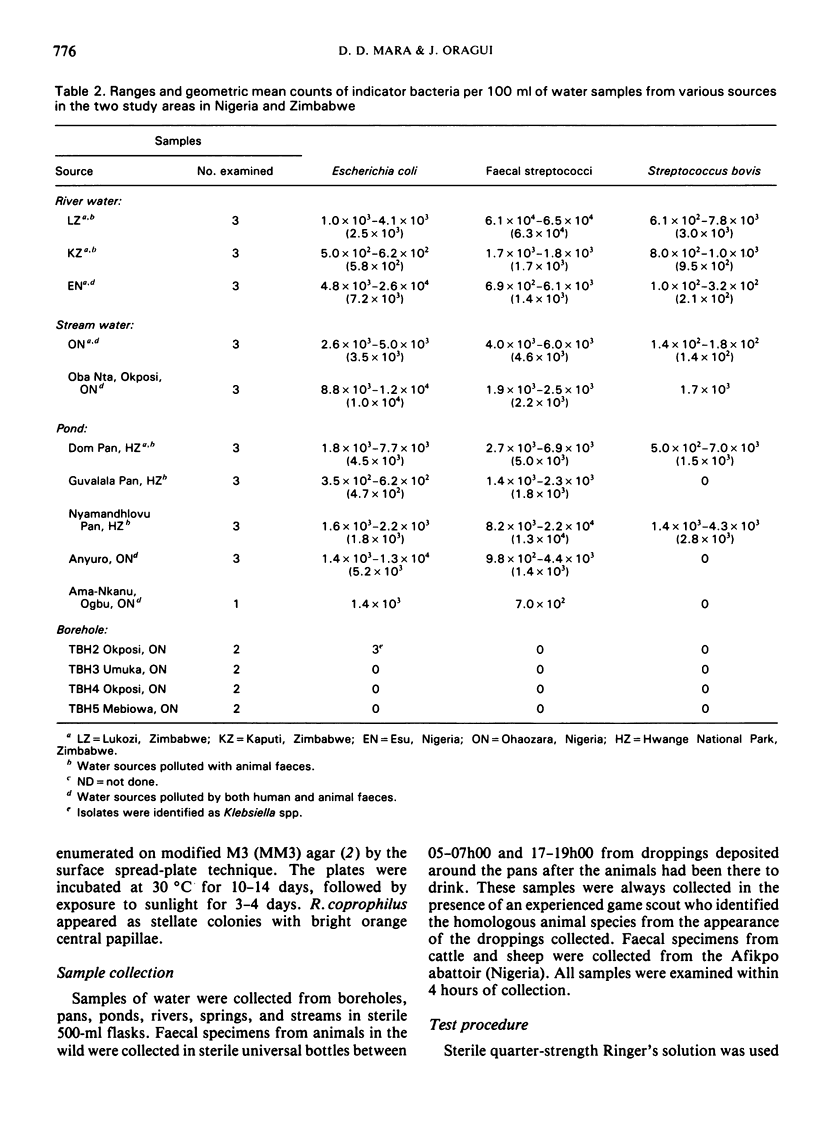
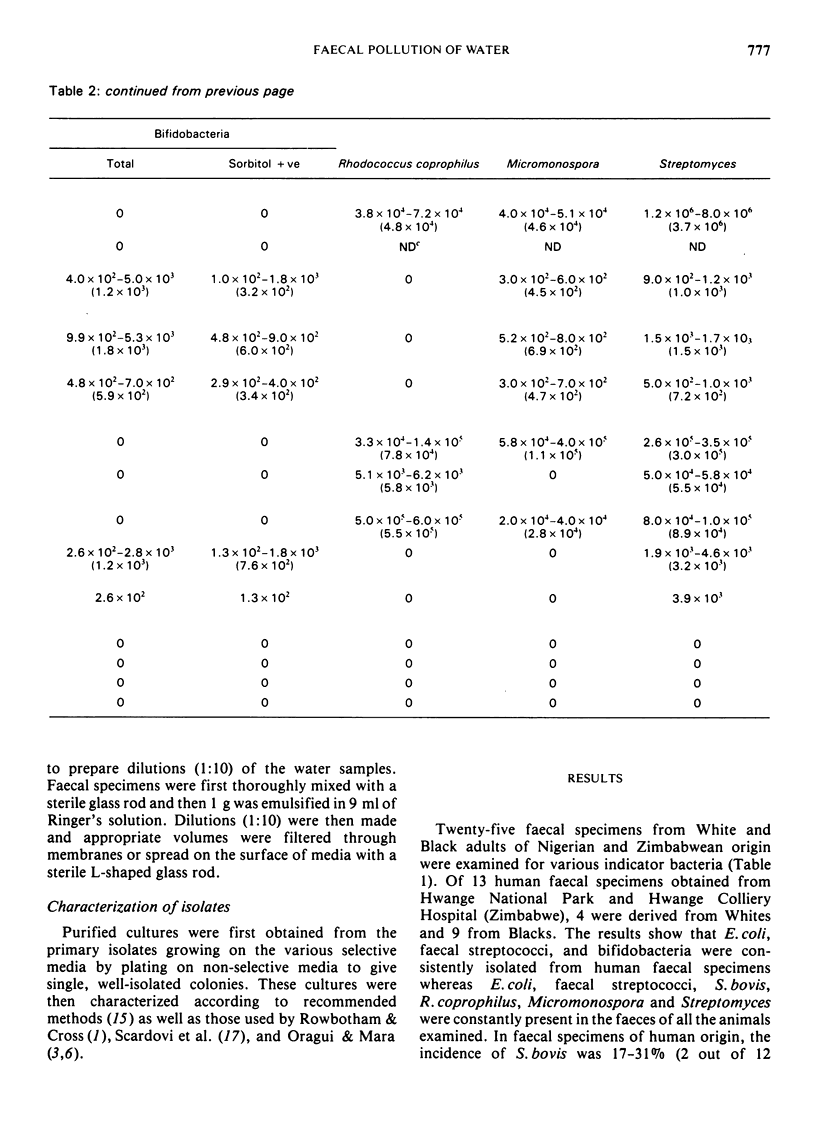
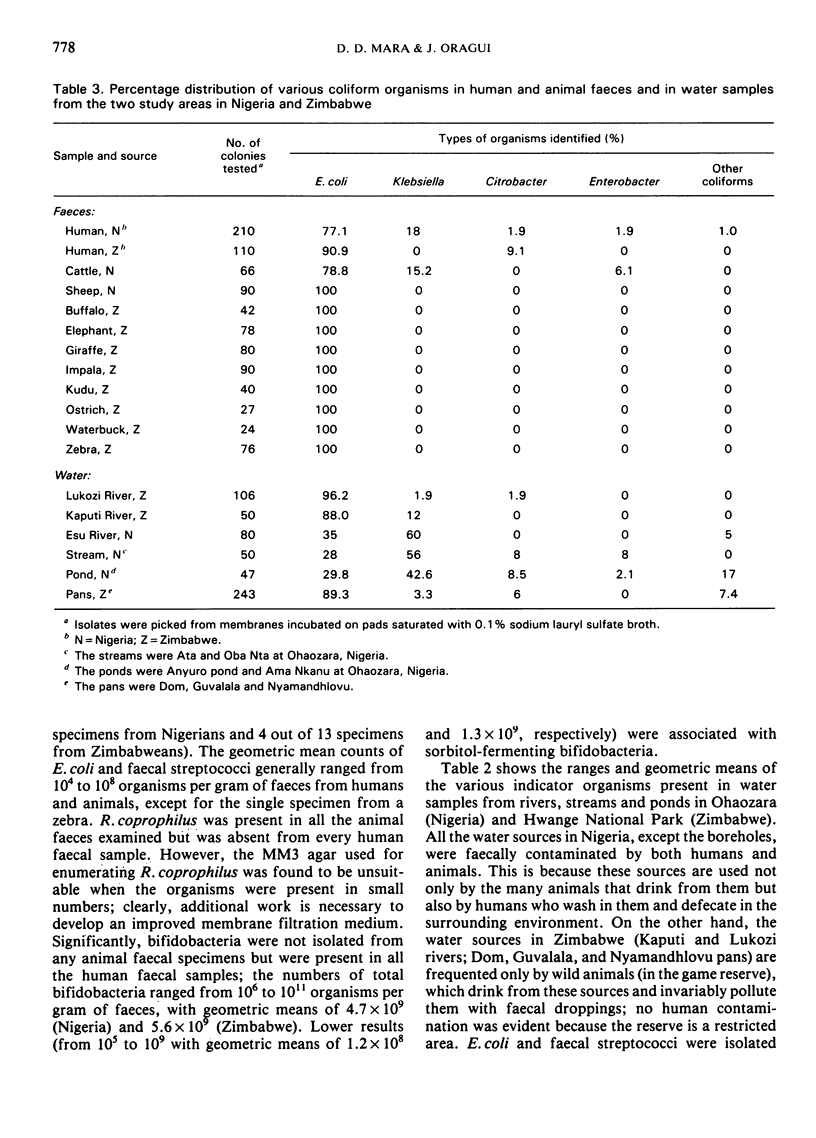
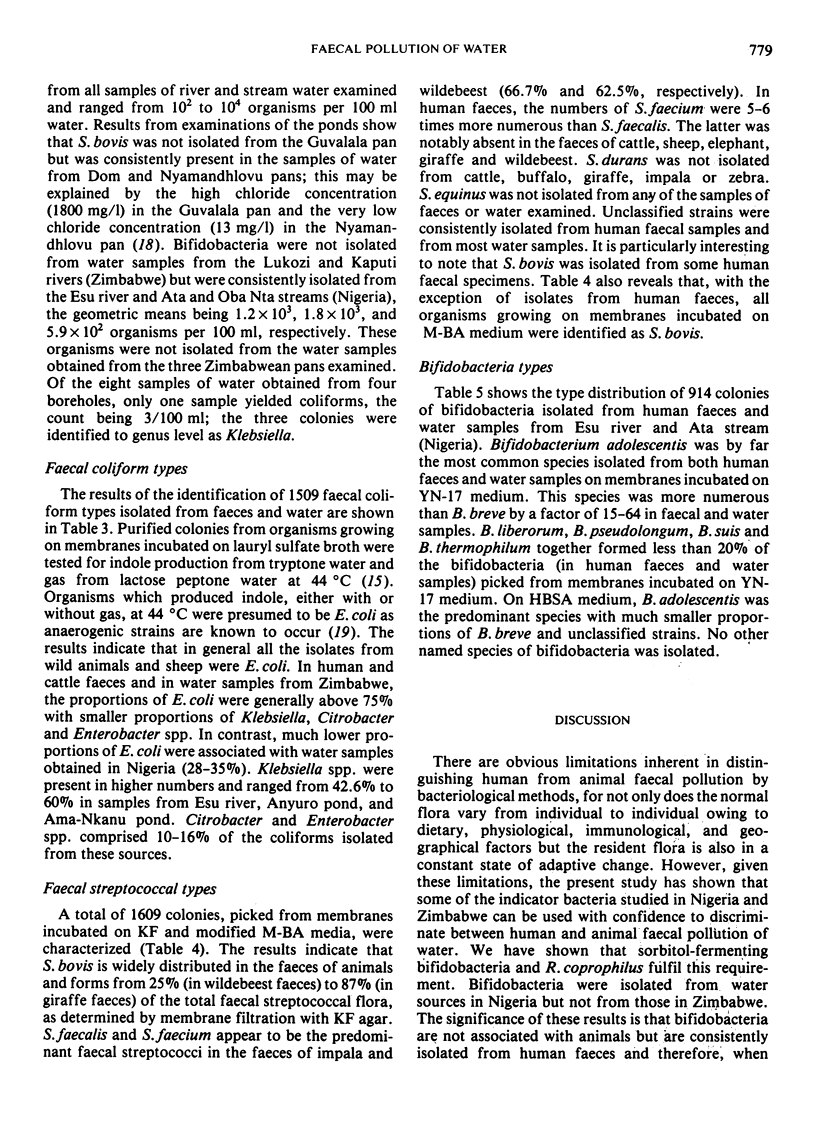
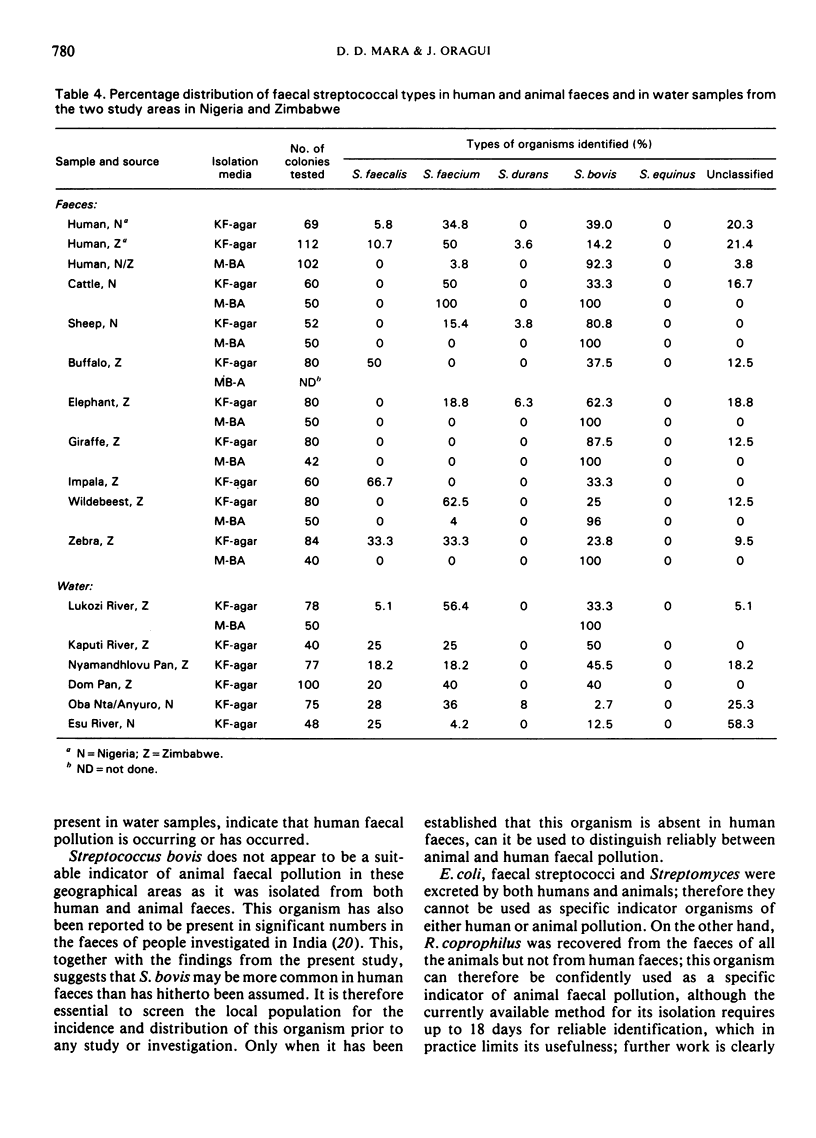
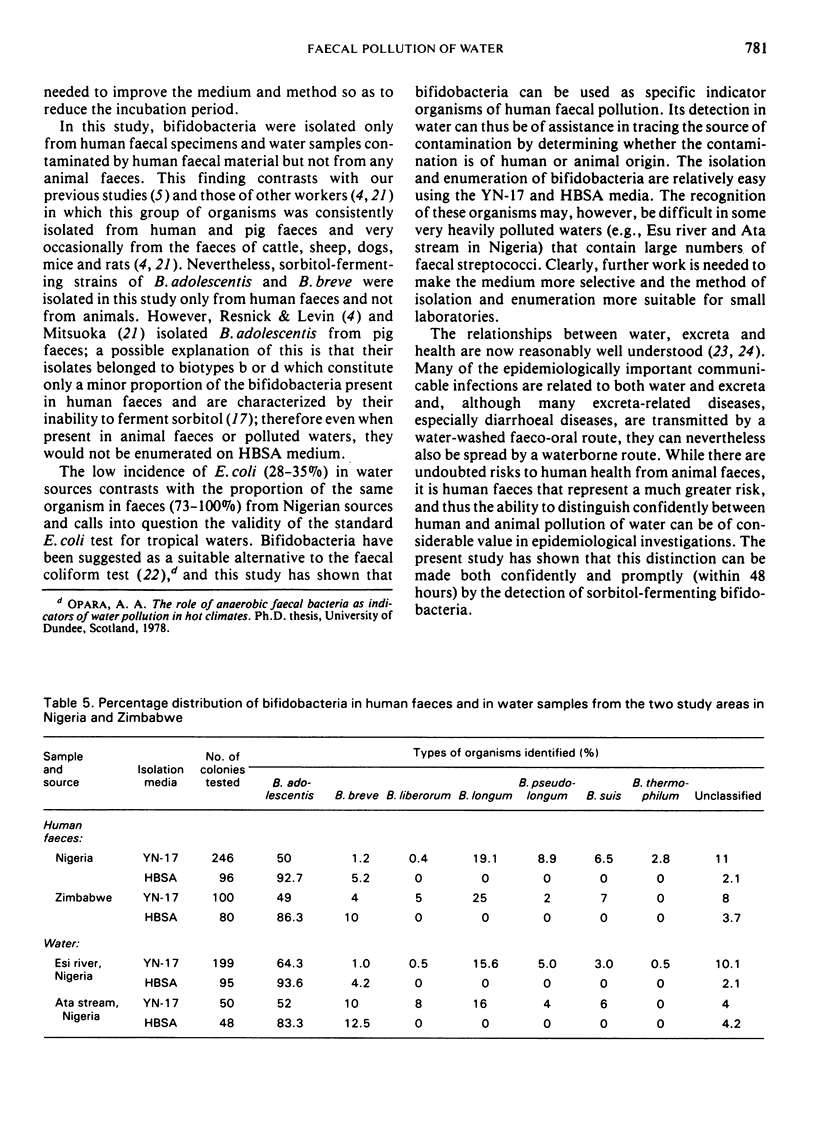

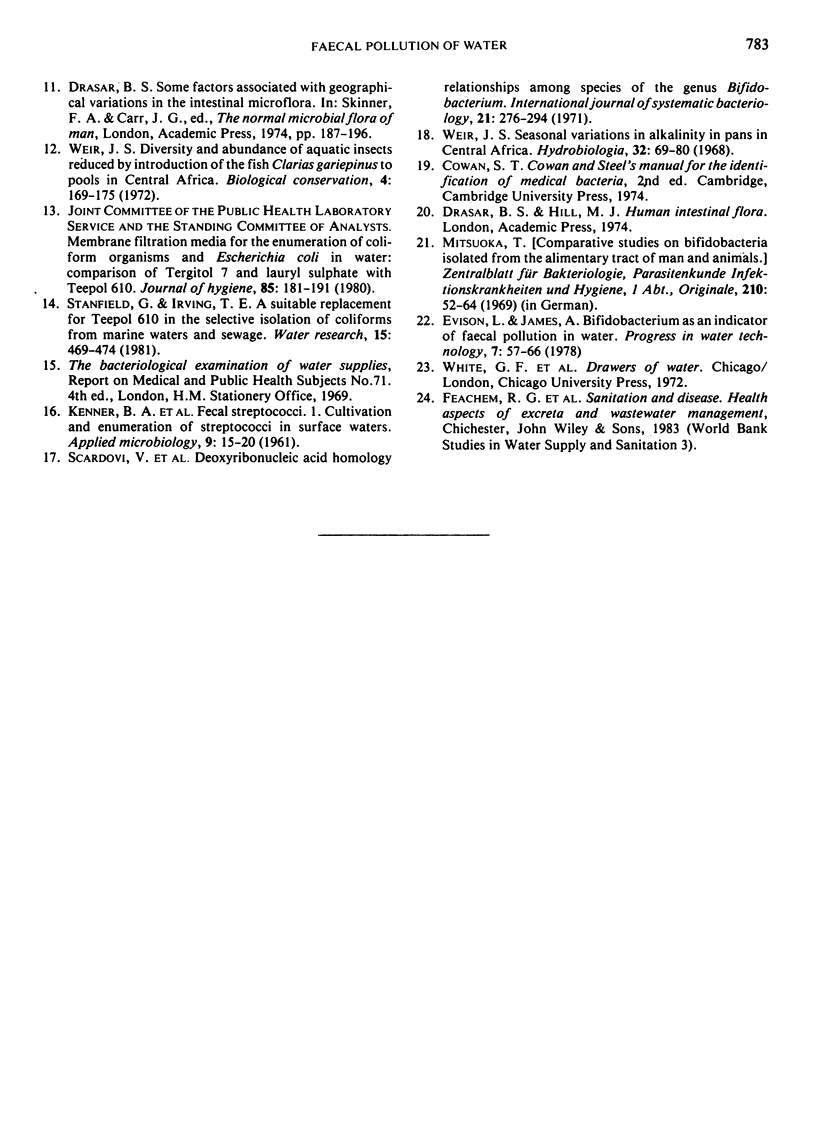
Selected References
These references are in PubMed. This may not be the complete list of references from this article.
- COOPER K. E., RAMADAN F. M. Studies in the differentiation between human and animal pollution by means of faecal streptococci. J Gen Microbiol. 1955 Apr;12(2):180–190. doi: 10.1099/00221287-12-2-180. [DOI] [PubMed] [Google Scholar]
- Drasar B. S. Some factors associated with geographical variations in the intestinal microflora. Soc Appl Bacteriol Symp Ser. 1974;3(0):187–196. [PubMed] [Google Scholar]
- Geldreich E. E., Kenner B. A. Concepts of fecal streptococci in stream pollution. J Water Pollut Control Fed. 1969 Aug;41(8 Suppl):R336+–R336+. [PubMed] [Google Scholar]
- KENNER B. A., CLARK H. F., KABLER P. W. Fecal Streptococci. I. Cultivation and enumeration of Streptococci in surface waters. Appl Microbiol. 1961 Jan;9:15–20. doi: 10.1128/am.9.1.15-20.1961. [DOI] [PMC free article] [PubMed] [Google Scholar]
- Mara D. D., Oragui J. I. Occurrence of Rhodococcus coprophilus and associated actinomycetes in feces, sewage, and freshwater. Appl Environ Microbiol. 1981 Dec;42(6):1037–1042. doi: 10.1128/aem.42.6.1037-1042.1981. [DOI] [PMC free article] [PubMed] [Google Scholar]
- Mara D. D., Oragui J. I. Sorbitol-fermenting bifidobacteria as specific indicators of human faecal pollution. J Appl Bacteriol. 1983 Oct;55(2):349–357. doi: 10.1111/j.1365-2672.1983.tb01331.x. [DOI] [PubMed] [Google Scholar]
- Mitsuoka T. Vergleichende Untersuchungen über die Bifidobakterien aus dem Verdauungstakt von Menschen und Tieren (Zugleich die Beschreibung von B, thermophilum nov. spec. und B. pseudolongum nov. spec) Zentralbl Bakteriol Orig. 1969 May;210(1):52–64. [PubMed] [Google Scholar]
- Oragui J. I., Mara D. D. A note on a modified membrane-Bovis agar for the enumeration of Streptococcus bovis by membrane filtration. J Appl Bacteriol. 1984 Feb;56(1):179–181. doi: 10.1111/j.1365-2672.1984.tb04712.x. [DOI] [PubMed] [Google Scholar]
- Oragui J. I., Mara D. D. A selective medium for the enumeration of Streptococcus bovis by membrane filtration. J Appl Bacteriol. 1981 Aug;51(1):85–93. doi: 10.1111/j.1365-2672.1981.tb00911.x. [DOI] [PubMed] [Google Scholar]
- Oragui J. I., Mara D. D. Investigation of the survival characteristics of Rhodococcus coprophilus and certain fecal indicator bacteria. Appl Environ Microbiol. 1983 Aug;46(2):356–360. doi: 10.1128/aem.46.2.356-360.1983. [DOI] [PMC free article] [PubMed] [Google Scholar]
- Resnick I. G., Levin M. A. Assessment of bifidobacteria as indicators of human fecal pollution. Appl Environ Microbiol. 1981 Sep;42(3):433–438. doi: 10.1128/aem.42.3.433-438.1981. [DOI] [PMC free article] [PubMed] [Google Scholar]


